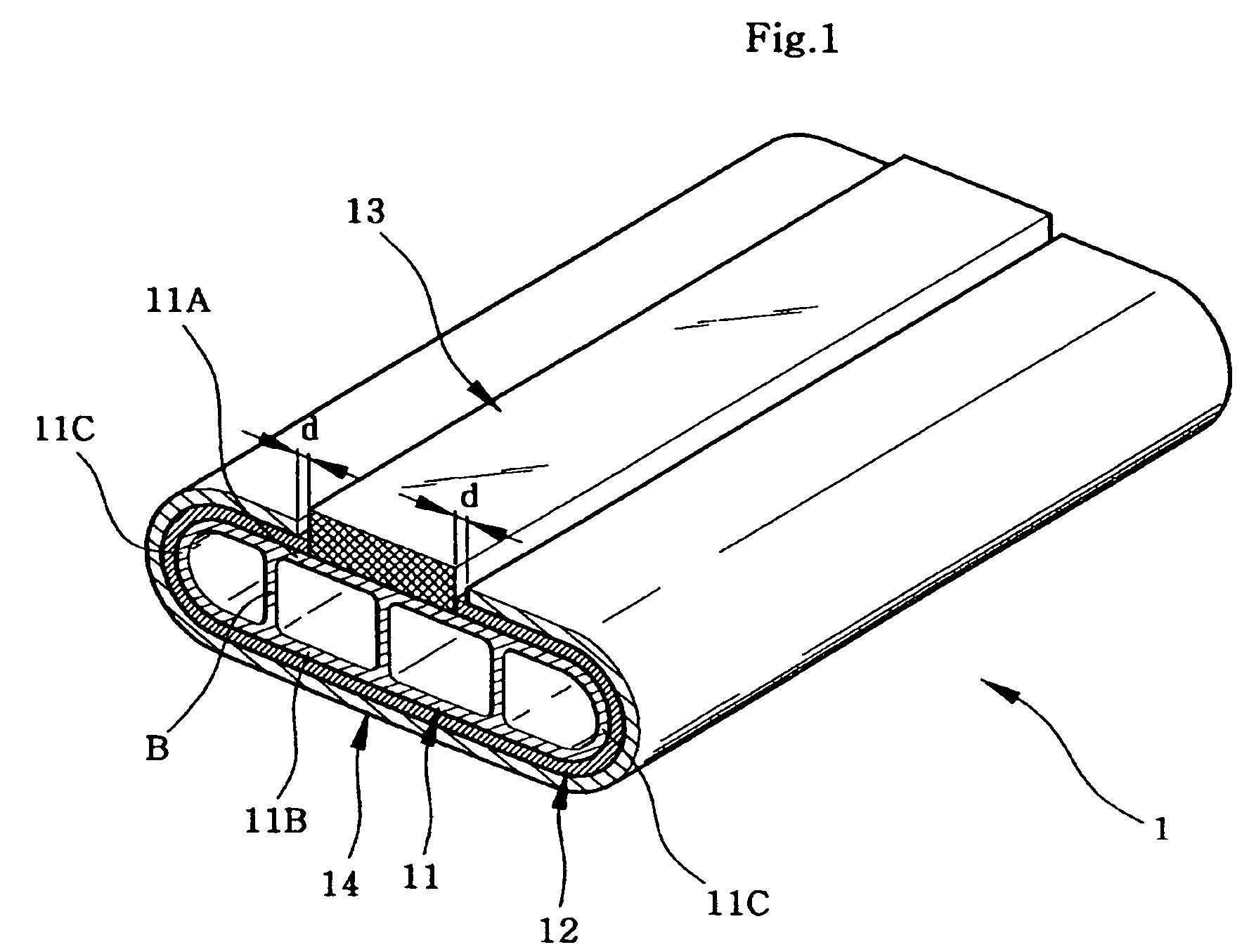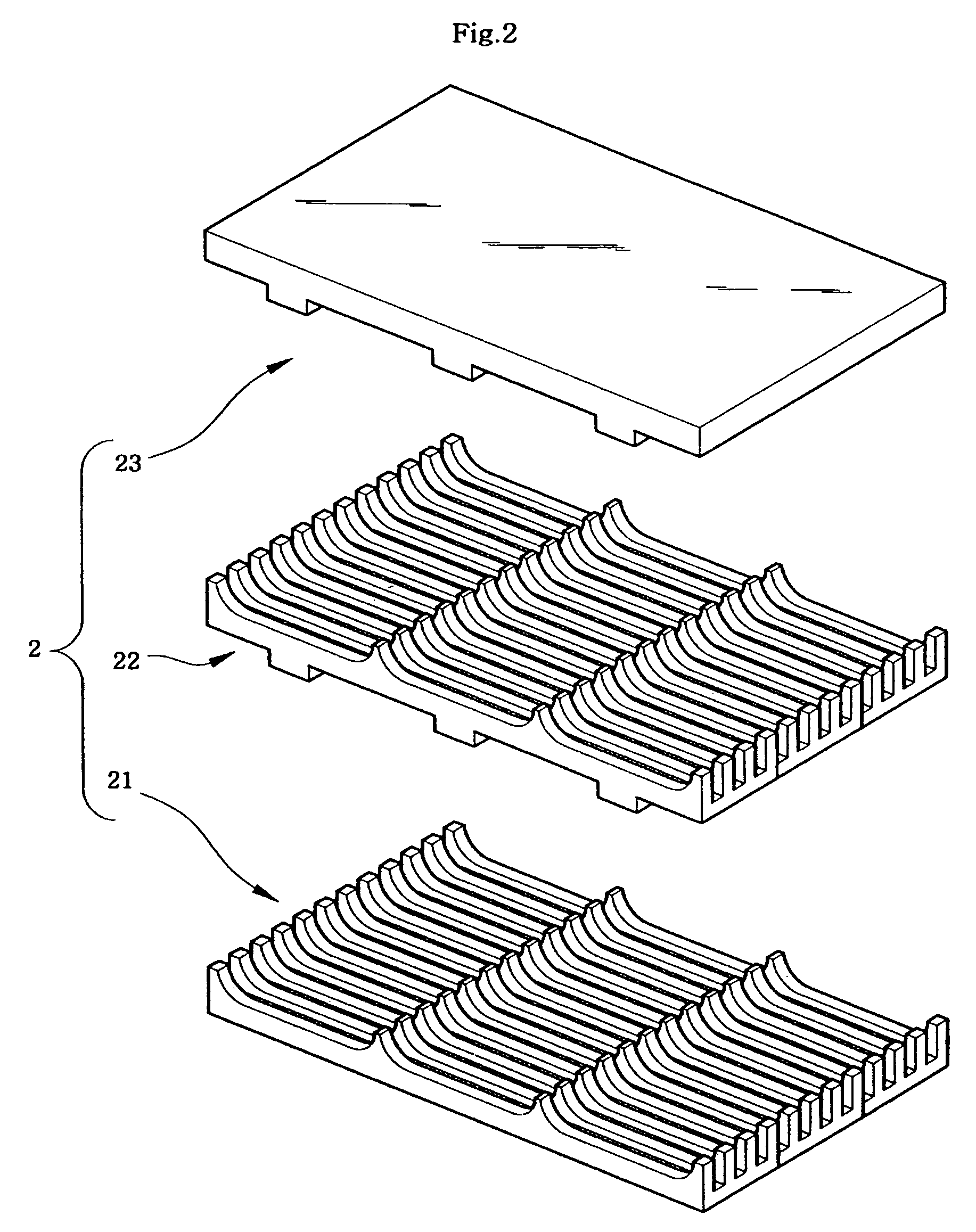Anode-supported flat-tubular solid oxide fuel cell stack and fabrication method of the same
a technology of solid oxide fuel cell and anode support, which is applied in the direction of fuel cell details, final product manufacturing, climate sustainability, etc., can solve the problems of increasing the production cost of fuel cells, low power density, and increasing the production cost of tube-type solid oxide fuel cells, so as to improve the power density. a relatively low
- Summary
- Abstract
- Description
- Claims
- Application Information
AI Technical Summary
Benefits of technology
Problems solved by technology
Method used
Image
Examples
Embodiment Construction
[0035]Reference will now be made in detail to the present preferred embodiments of the present invention, examples of which are illustrated in the accompanying drawings, wherein like reference numerals refer to like elements throughout.
[0036]An anode-supported flat-tubular solid oxide fuel cell stack according to the present invention is characterized in that it is provided with two or more fuel cells and three or more connector plates for desirably arranging the fuel cells and electrically connecting the fuel cells to each other. Additionally, the stack has the flat-tubular fuel cells to secure advantages of a plate-type and a tube-type fuel cell. Further, a connector is coated on an external surface of an supported tube according to a wet process such as a plasma spray coating process, or a slurry coating process to electrically connect the fuel cells to the connector plates.
[0037]A flat-tubular unit fuel cell constituting the stack according to the present invention includes semi...
PUM
| Property | Measurement | Unit |
|---|---|---|
| weight | aaaaa | aaaaa |
| temperature | aaaaa | aaaaa |
| temperature | aaaaa | aaaaa |
Abstract
Description
Claims
Application Information
 Login to View More
Login to View More - R&D
- Intellectual Property
- Life Sciences
- Materials
- Tech Scout
- Unparalleled Data Quality
- Higher Quality Content
- 60% Fewer Hallucinations
Browse by: Latest US Patents, China's latest patents, Technical Efficacy Thesaurus, Application Domain, Technology Topic, Popular Technical Reports.
© 2025 PatSnap. All rights reserved.Legal|Privacy policy|Modern Slavery Act Transparency Statement|Sitemap|About US| Contact US: help@patsnap.com



